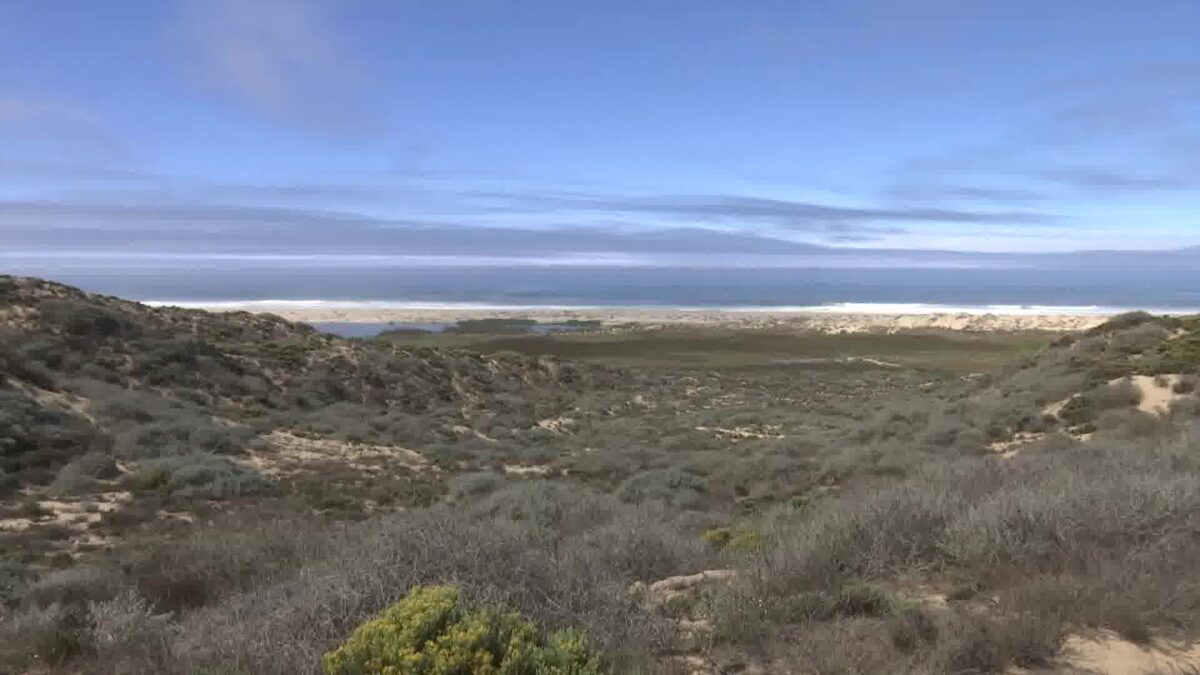Public May Gain Greater Access to Guadalupe Dunes after Chevron Land Donation

Dave Alley
GUADALUPE DUNES, Calif. (KEYT) – A planned land donation by Chevron may provide greater public access to the Guadalupe Dunes in the future.
Recently, the oil and gas company and the U.S. Fish and Wildlife Service agreed to a land transfer that will result in Chevron donating about 2,700 acres of coastal land it owns along the border of San Luis Obispo and Santa Barbara counties.
The property within Chevron’s Guadalupe Restoration Project, that’s located just west of the City of Guadalupe.
“The Guadalupe Restoration Project has been working to, conduct environmental remediation and habitat restoration at the former Unocal oil field for about 27 years now,” said Jeff Moore, Chevron Lead Public Affairs Advisor. “We’re finally at a point where we’re about three to five years from being completed with the soil remediation, and that’s a point at which we think we can transfer the land to the U.S. Fish and Wildlife Service to become part of the Guadalupe-Nipomo Dunes National Wildlife Refuge.”
According to the U.S. Fish and Wildlife Service website, “the Refuge was created to conserve central California coastal dune and associated wetlands habitats and support the recovery of native plants and animals that are federally listed as threatened or endangered. Home to more than 120 species of rare plants and animals, the refuge provides a safe place for species such as La Graciosa thistle, surf thistle, beach spectacle pod, giant coreopsis, California red-legged frog, western snowy plover, and California least tern.”
Since the late 1990s, the land has been the site of round-the-clock work to restore the landscape which was harmed due to leakage of diluent, which was used to help facilitate production and transportation of crude oil during the time the oil fields were in operation from 1949 through 1994.
Over the decades, Chevron, which acquired original owner Unocal and the property in 2005, reports eight to 10 million gallons of diluent was released, negatively impacting soil, groundwater and surface water.
“We still have a few years of work left,” said Moore. “We are still excavating some impacted soil. We are constructing the Soil Management Area where we’re going to permanently dispose of any remaining impacted soil and we’ve got more groundwater treatment work to be done.”
With the end of the decades-long restoration project now within its sights, Chevron has agreed to transfer most of its property to the wildlife refuge at some point in the future.
“Our plan is for the majority of the site about 2,700 acres to be transferred to the U.S. Fish and Wildlife Service to become part of the National Wildlife Refuge,” said Moore. “We’ve got the beach here from the Pacific Ocean. We’ve got the foredunes, the wetlands, and then we move back into coastal dunes scrub. There’s a variety of habitats and this site is actually home to about 29 special status species.”
The idea is that donation will at some point allow for greater public access to the dunes area once the restoration effort is completed.
“Having access to the beach, where you can walk and be peaceful, and bring your family out and enjoy the environment would be a godsend,” said Guadalupe Mayor Ariston Julian. “It’s close to Santa Maria, close to San Luis Obispo. Close to Lompoc. You know, this environment for local residents is very important for us.”
Julian grew up in Guadalupe and remembers going to the dunes when he was younger, especially to fish literally right next to working oil wells.
“We used to park at the oil wells,” said Julian. “There’s about five (oil well) pads that we used to go and park on depending on where the fish were biting. You park at the oil wells and within those 100 yards, you’re fishing. There was open access to anybody that wanted to.”
Now at some point in the future, public access where those oil wells used to pump may once again see the return of visitors, only this time, the scenery will look much different.
“We’re really proud of of what we’ve accomplished here in restoring habitat in the on the beach and the the coastal dune scrub,” said Moore. “As for the future, with the wildlife refuge, that’s really going to be determined by the U.S. Fish and Wildlife Service. They will have a planning process that will determine what are the appropriate uses and what level of public access there will be at the site in the future.”
When the land transfer was officially agreed to recently, the U.S. Fish and Wildlife Service said in a statement:
“After years of work between Chevron affiliate Unocal and the U.S. Fish and Wildlife Service, a donation agreement has been executed to facilitate the Service’s potential acquisition of the majority of Chevron’s Guadalupe Restoration Project site, adjacent to Guadalupe-Nipomo Dunes National Wildlife Refuge. The donation agreement outlines the terms and conditions necessary for the National Wildlife Refuge System to accept the site from Chevron. This process is in the preliminary stages, and the donation agreement is a first step towards permanent acquisition of the property with the goal of being added to the Guadalupe-Nipomo Dunes National Wildlife Refuge. The Service looks forward to continuing to work with Chevron, collaborating with relevant parties and the community while solidifying the terms of the agreement.”
When the land transfer takes place, Chevron will remain on the site in a smaller capacity and will for an undetermined amount of time.
“We’ll still retain a small parcel on which we’ll maintain our Soil Management Area and our Advanced Wastewater Treatment System that will continue to perform some remaining groundwater remediation work and also treat any wastewater that comes from the Soil Management Area.”
The Latest Breaking News, Weather Alerts, Sports and More Anytime On Our Mobile Apps. Keep Up With the Latest Articles by Signing Up for the News Channel 3-12 Newsletter.